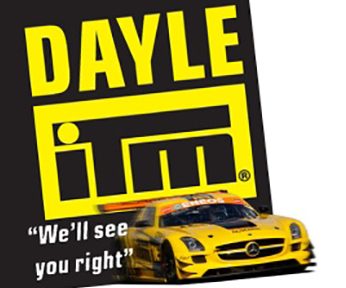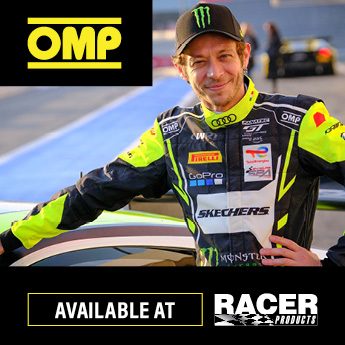There has never been more interest in the world of sim racing than there is right now, which has seen motorsport fans all over the world flocking to purchase full pedal, seat, and steering wheel rigs.
Logitech has recently launched its new G293 Trueforce steering wheel, successor to the G920 and ubiquitous G29. The Trueforce bit is perhaps the wheel’s most important feature. Its Logitech’s new force feedback program, created to improve the level of vehicle yaw a driver can feel through their fingertips.

Trueforce is effectively software created for much quicker processing of game audio and physics, capable of processing and reacting to data at up to 4000 times per second, according to Logitech. Audio is a particularly interesting thing for a wheel to base its feedback on, but it makes sense given the way racing games depict things like surface changes, locked tyres, and contact through sound.
Unfortunately not every racing game has Trueforce’s programing accounted for, meaning that out of the box it may be somewhat moot when paired to older games. Among the games built to incorporate Trueforce is the latest iteration of Assetto Corsa, which is now finally available on console.
VelocityNews was recently invited to a Logitech G923 event, where we were able to lob a Porsche 911 GT3 around Spa-Francorchamps while sampling the new wheel. Logitech are a heavily established name in the segment, and it shows in the quality of the G923, with its leather-wrapped rim, shift lights, and overall standard of finish.

Priced at $699, the G923 sits at the top end of the entry-level steering wheel segment against other belt and gear-driven systems, and still much cheaper than the direct-drive wheels from the likes of Fanatec and Simucube. It’s available for both Xbox and PlayStation, and both are also compatible with PC.
The G923 presents a much more constant level of vibration than past wheels. This raises its hand as a positive most obviously when you’re clanging kerbing at Les Combes or using the full apron on exit at Blanchimont, but is perhaps most useful in its subliminal background workings. Like how it depicts the car’s pitching over bumps on the Kemmel Straight or how you can feel its weight go from heavy, to light, to heavy again as the front end of your car loads up through Eau Rouge and Raidillon.
Further helping the G923 are an improved set of pedals. The brake pedal in particular has much longer travel than models of old, and each is now finished in brushed metal instead of old-school rubber.

Among those at the event was former Gran Turismo Sport world champion and Toyota representative Simon Bishop. When it comes to steering wheels, he “looks for a general overall feel; something that’s a good mix of feedback but also stability that enables you to get a good grasp of the car you’re driving.”
Bishop, a former Velocity News contributor who now works at an electronics store, is a unique case in the world of esports. When he started to reach the level of qualifying for big events, he was one of the few drivers to not use a full wheel set-up — instead achieving top results using a standard Play Station controller. However, over time he realised that a wheel would unlock more consistency and better results.
“The move from controller to wheel was subtle but significant. All the things you’ve learned from using the triggers with your hands have to be re-learnt with your feet, which is a challenging process.
“You have to actively be slower than you know you can be while you learn the ropes, which can be challenging from a competitive perspective. Otherwise the same basic fundamentals you learn in terms of race craft and learning tracks and braking points all carry over.”

While globe-trotting overseas events appear to be off the table for now, that doesn’t mean Bishop’s calendar is empty. The Dunedin local has been looped into various launch events with gaming companies like Logitech.
The retained level of interest stems from a groundswell of new interest in motorsport esports in response to the Covid-19 pandemic. The Supercars Championship, IndyCar Series, Formula 1, NASCAR, and more successfully launched online esports categories in order to stay relevant during the global shutdown earlier this year.
The categories proved successful, with the BP Supercars All Stars Eseries in particular helping the category stay afloat by guaranteeing it regular television slots and surprisingly high ratings. The question now is what the boom in esports interest means for virtual racing, and whether it can become more than just motorsport’s side-hustle.

“I think the boom for esports during the lockdown comes with its own drawbacks, whether it be over saturation or just finding a correct niche where it needs to sit. The hurdle of people not understanding what it is seems to have been mostly overcome, but it’s about finding where the esports side fits into the picture ultimately that counts.
“Is it always going to be just a side activity? An exercise for the off season of the regular motorsport? That’s what the coming months will decide.”
The esport champion’s advice for those wishing to follow the same path remains relatively simple — don’t rush into things.
“Don’t necessarily feel the need to buy all the most expensive stuff straight away,” Bishop said. “Get something reasonable at a start point and learn the fundamentals before spending a ton of money. You don’t need the super fast equipment to ultimately have a good experience — although it obviously helps.”
















